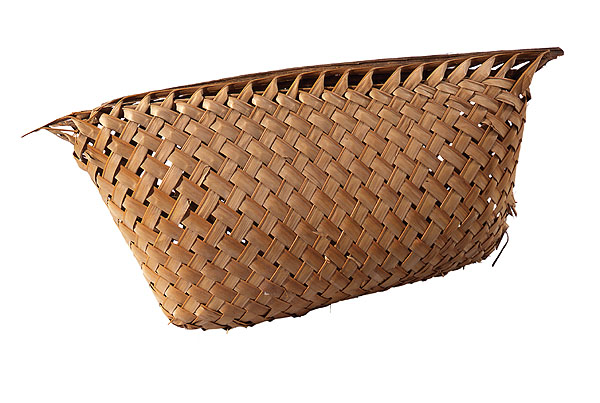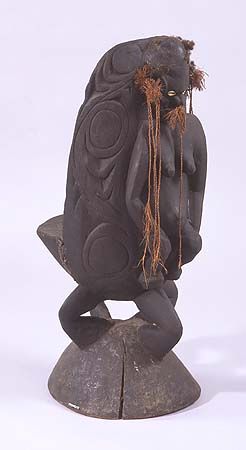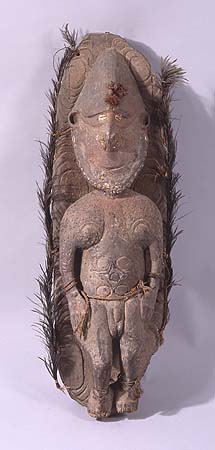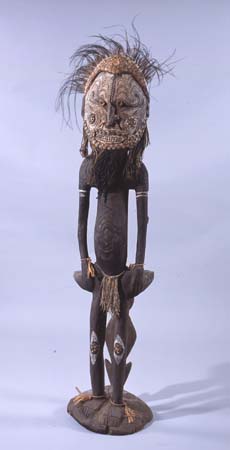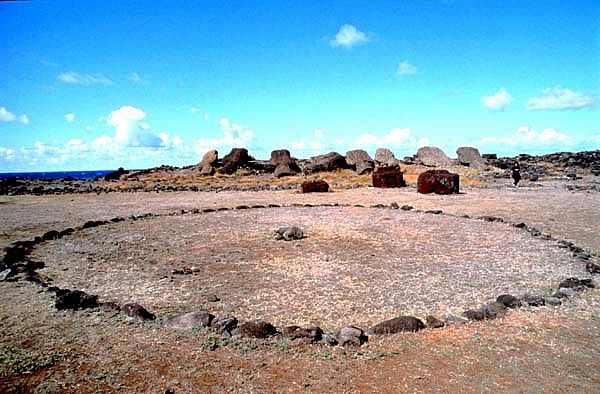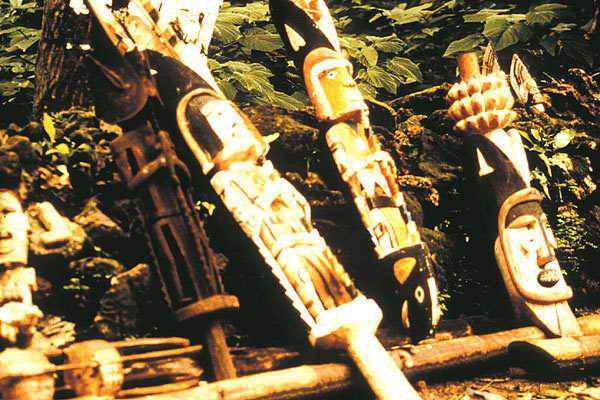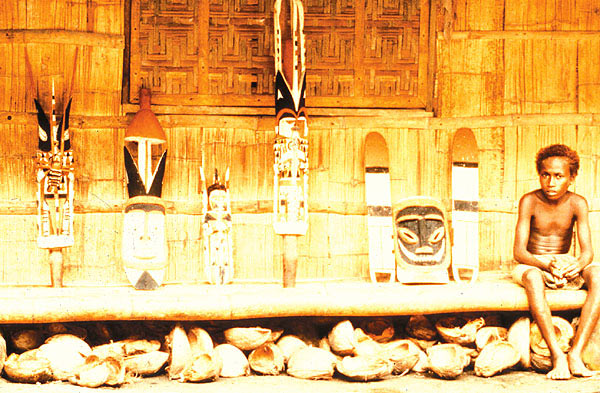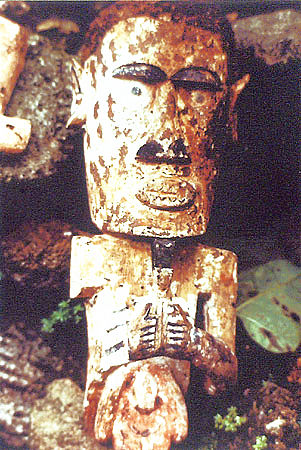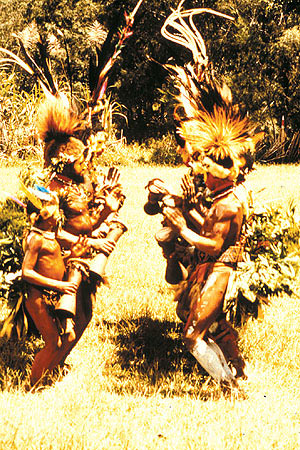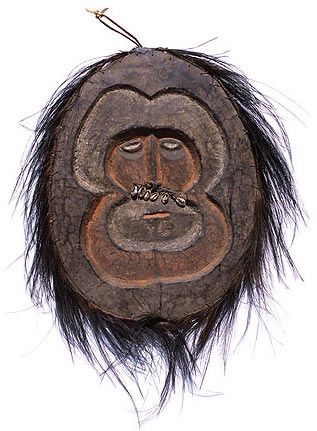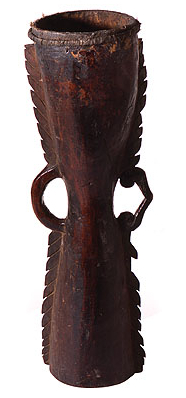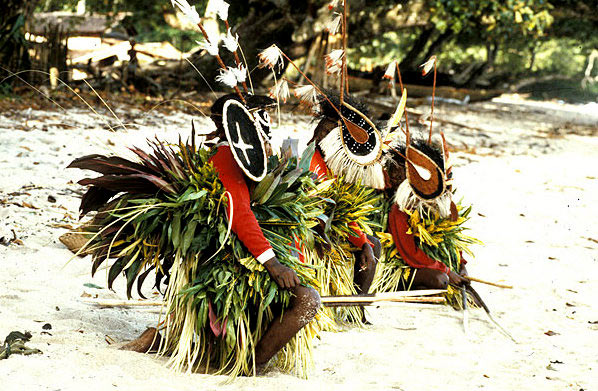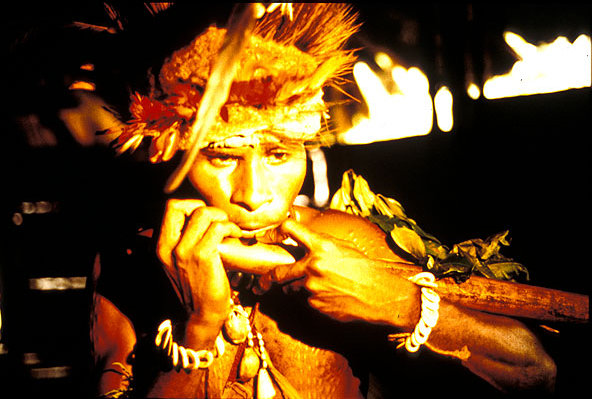Indigenous Knowledge and Descriptions
The peoples of Oceania are considered to belong to the Austronesian language family by linguists (referring to people living on Southern Asian islands and speaking similar languages). But, some peoples do not belong to the Austronesian family, such as those of the Papuan language family.
Tree diagram of the language families of Oceania. (Kirch 2000:99)
Although some Austronesian languages have vocabulary related to directions, such as East, West, South, and North, most directional terms were developed after contact with Europeans.
The direction and positioning system in Austronesian languages is built on two axes. One axis is that of land and sea, and the other is of monsoons.
The Hawaiians, for example, use mauka referring to "facing mountains", and makai referring to "facing the sea." The axis of the monsoon is related to the East and the West where the sun rises and sets.
Most of the Austronesian languages have adopted the decimal system, but some Austronesian languages of New Guinea use quite a different system. They place numbers together, possibly due to the influence of the Papuan language family.
For example, the Gapapaiwa in Milne Bay use sago for "one", rua for "two", rua ma sago for "three", rua ma rua for "four" and rua ma rua ma sago for "five". This system can only be used for small numbers.
Some peoples of Oceania use complex number classifiers to count.
For some Micronesian cultures the traditional way of counting is very complicated. They use up to thirty classifiers to depending on shape and other factors.
Melanesian life is filled with all kinds of intangible spirits, but rarely with deities. On the contrary, Polynesians have not only deities with concrete images, but also the concept of large powers. Tane, Tu, Rongo, and Tangaloa, the four big powers, are very common in Polynesia.
Tane is a male deity representing procreation, creation, and the Sun.
Tu is the deity of war. Rongo is the deity of rain, earth, and plentiful harvest.
Tangaloa has different social functions. To the Samoan, he is the creator of lands and human beings. To the Tongans, he is the god of handicrafts. To the residents of Marquesas, he is the god of the ocean and fish.
Melanesian society and cultures are diverse, but most of the people believe in the existence of some kind of spirit such as ancestral spirits who live close to people or tribes. Ancestral spirits go back to their hometowns at fixed times of the year. Baloma in Trobriand Islands is a typical example.
The residents on Trobriand Islands call dead spirits Baloma. When Baloma leave their bodies, they row a canoe to the dead spirit village located on Tuma Island, which is ten miles to the Northeast. The new Baloma will give the leader, valuable gifts in exchange for the right to live in the village.
Balmona will row their canoes back to their hometowns every August and September, when the villagers celebrate the yam harvest. After treating Balmona for two to four weeks, the residents will hold a ceremony to send them back to Tuma.
Mana is one kind of taboo common in Oceania. The word "taboo" is from the Polynesian kapu or tapu. Kapu or tapu refers to laws of avoidance made carefully by men, such as the taboo of incest, avoiding one's mother-in-law in some places in Melanesia, and avoiding dead spirits among the Maori in New Zealand.
Mana is not only good or bad, but also infectious. Mana can be transmitted by contact. It is extremely dangerous for people to engage in contact with Mana, so the taboo that holy power is untouchable was formed.
To the Polynesians, matters can be divided into two categories, holy ones and normal ones. There must be Mana in holy matters, so they are forbidden. Therefore, they should be kept separate from normal matters. Mana maintain the power of stratification.
Today, most of the residents on Easter Island are Catholic, and crosses with fish designs have been placed on the beaches.
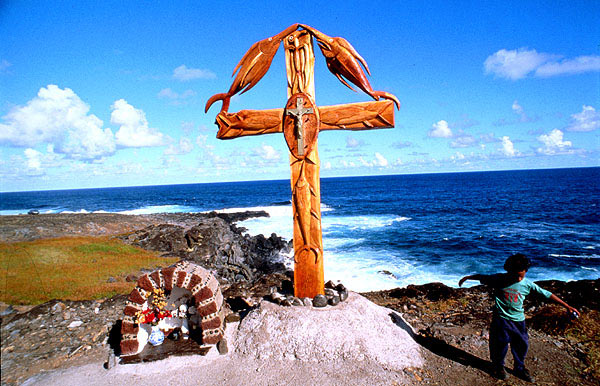
The New Guinean traditional ceremonies include those for birth, puberty, marriage, death and burial, basically ceremonies from birth to death. The annual ceremonies related to living activities and other shaman and memorial ceremonies are accompanied by singing, dancing and diverse social exchanges. People communicate with the spirit world through shamanism and ceremonies. They have developed unique presentations of art, including: woodcarving, stone carving, bone carving, seashell carving, drawing, instruments, bark paintings, pottery, architecture, weaving and human body decoration, etc.
Christianity has been enthusiastically introduced ever since the Europeans came to Oceania. However, the peoples of Oceania adapted religions from all over the world, adding their own interpretations and combining them with their cultures.
In New Guinea, the organization and carrying out of important ceremonies, painting and carving were strictly the work of males. Men were always the main participants in the creation and performance of art. Women could only dance outside the ceremonial hall, and carving was taboo for women.
Most New Guinea women are good weavers. They make net bags, hula skirts, pottery, and the ornaments they wear to ceremonies.
The net bags can be seen everywhere. Usually people hang the bags from their heads in order to carry vegetables, food, wood, personal items, ritual gear, dogs and even babies. Women trade gifts with net bags, and make hats, aprons, and fishnets with similar weaving techniques.
The net bags are mostly made of plant fiber. Now, they may also use colorful wool, acrylic yarn or nylon.
To make net bags, they wind the fiber tightly around their legs, and sometimes add animal fur along with the fiber.
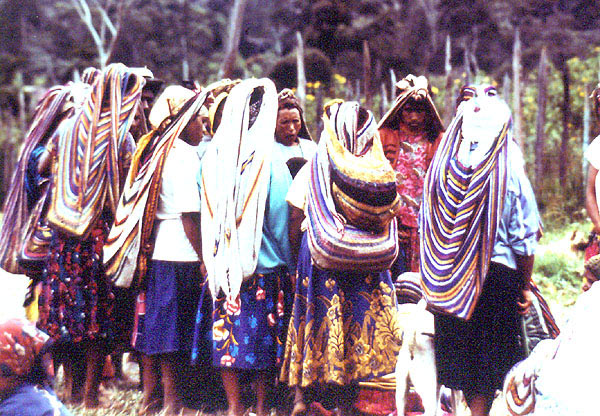
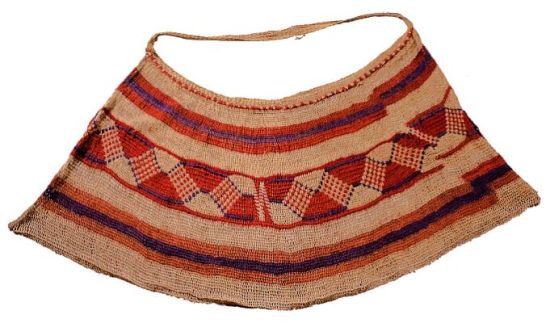
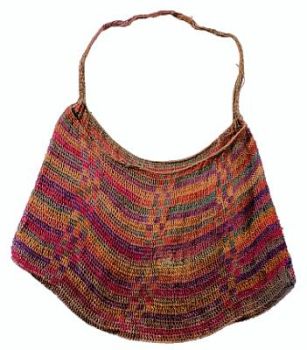
Cloth and mats of the Trobriand Islands and Polynesia's Samoan Island reveal the transformation of political power from relative power. They are also a reassurance of political rank and fortune.
Women manufacture cloth to maintain relatives' production ability and political power. It is a symbol of sister and brotherhood.
Cloth and mats are virtual entities. They absorb, describe and define time. When maintaining a world of family politics, the possession of these cloths and mats signify "memory" and "consent" that are beyond time and flesh.
